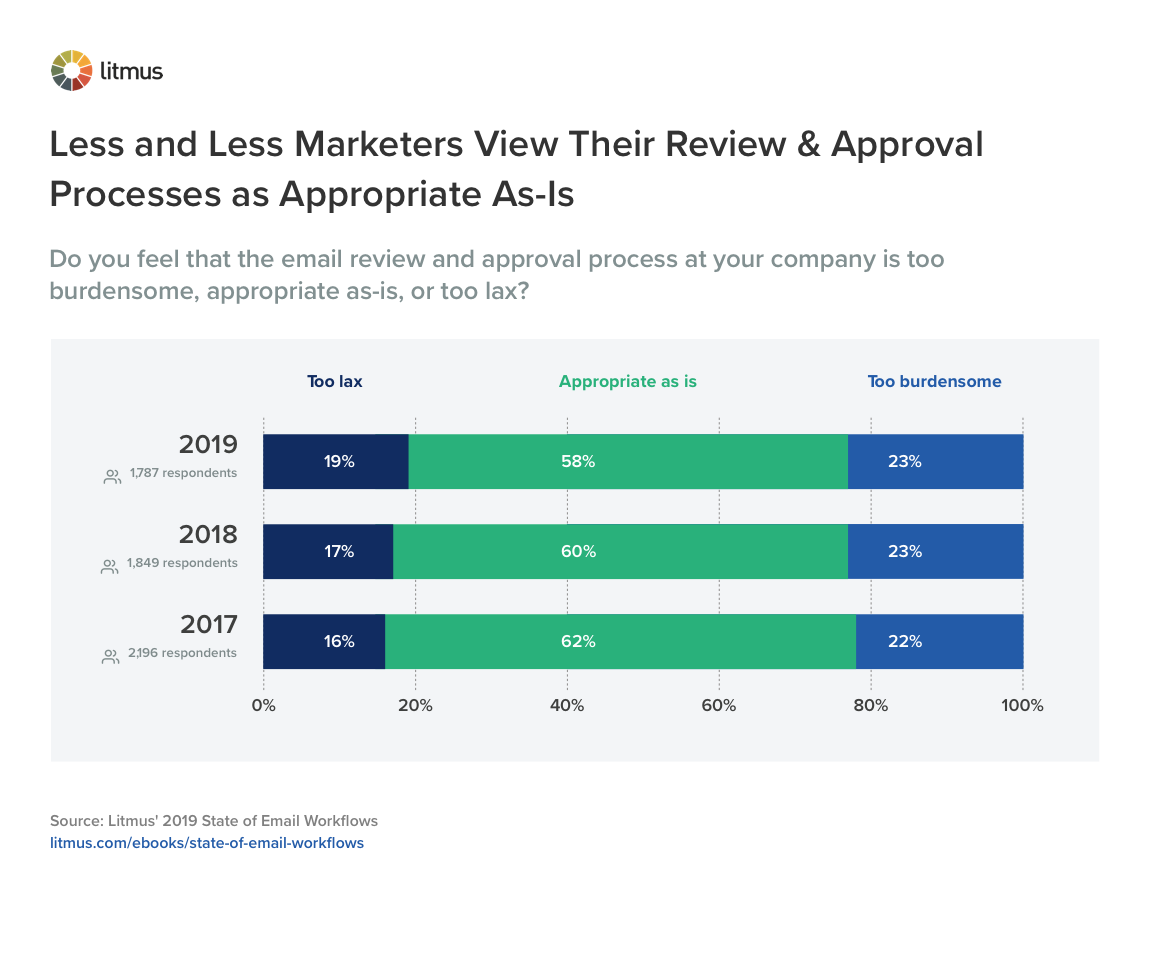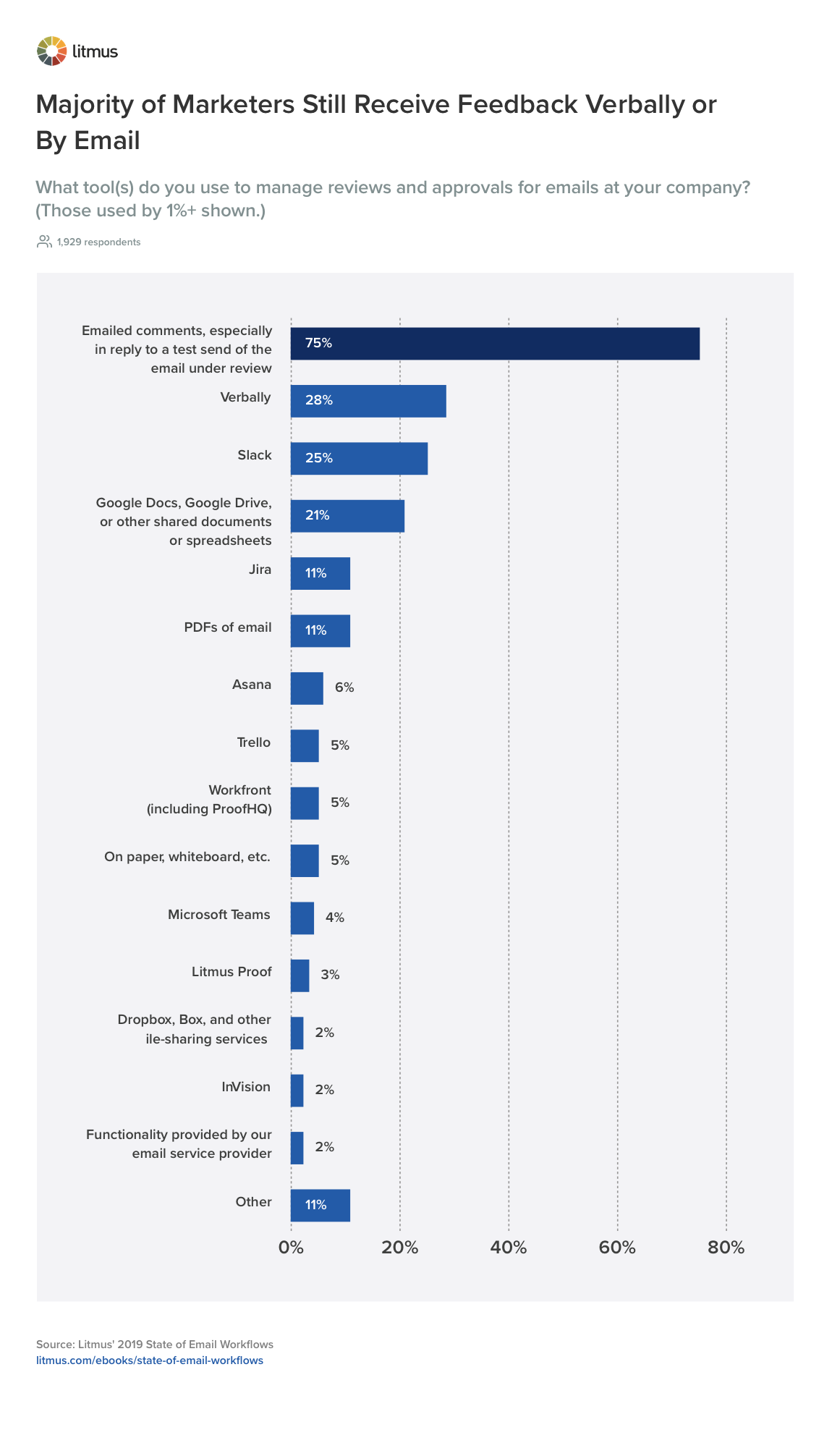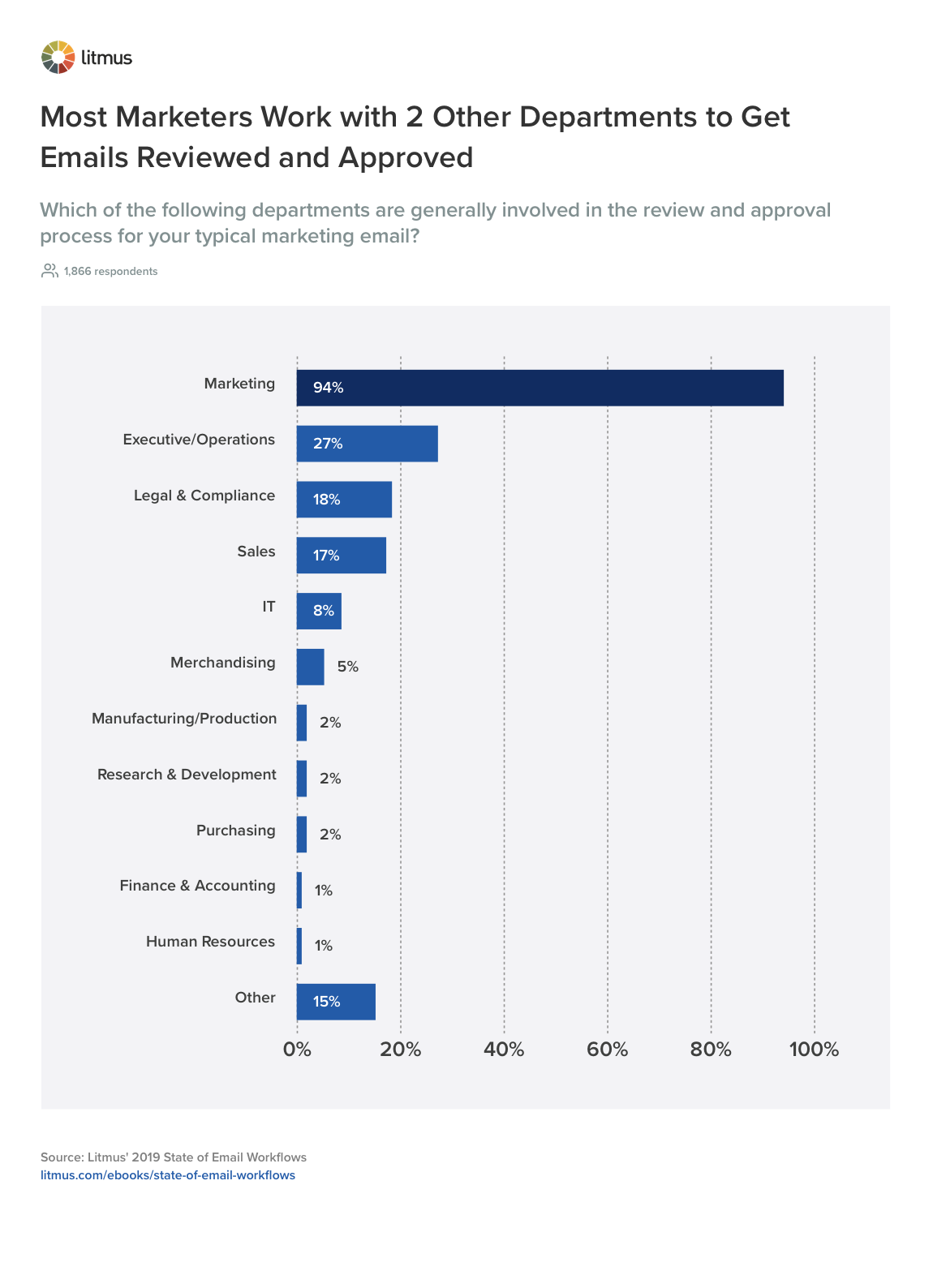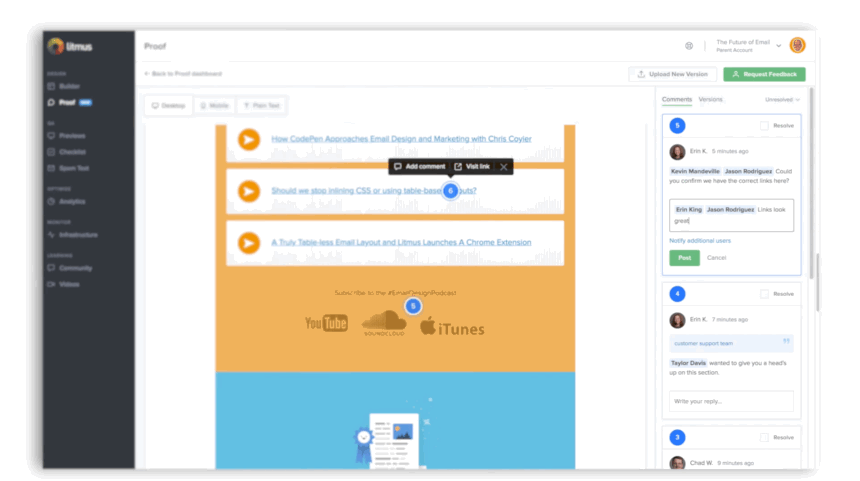How to Make Collecting Campaign Feedback Less Painful
“Can you review this email for me? Sending you a quick test!”
“Hey, could you review the email I sent you the other day? Thanks!”
“Wait, where are Tom’s comments?”
If you’ve used any of these phrases in the past month, you probably have the email review blues. Symptoms include scattered feedback, conflicting comments, hours of bouncing between comments and editing, and an increase in headaches.
Unfortunately, it’s a trend our community is experiencing more and more. Over the past few years, our State of Email Workflows report has uncovered a shrinking percentage of marketers who feel their email review process is just right.

For some, the email approvals process is too burdensome. On average, marketers spend 4.2 hours gathering reviews and approvals for a single email, which is usually longer than it took to code it. Others may be struggling with an email review workflow that’s too lax, leading to errors slipping through the cracks.
Does it really have to be this way? Let’s explore.
What can ruin email reviews and approvals
In theory, you should be able to welcome the email review process with open arms. Anyone who has ever had a team member point out an obvious flaw that you totally overlooked understands how nice it is to get a fresh pair of eyes on your work.
So what’s the cause of this terrible review epidemic? There are three main culprits.
Issue #1: Scattered Feedback
Imagine you want to make yourself a sandwich for lunch, but the bread is in the bathroom, the veggies are in the garage, and the cheese is in your coat closet. Walking around to gather the ingredients and meet back in the kitchen would be time consuming and annoying.
It sounds like a ridiculous scenario, but it’s what email marketers have to deal with when they need to get feedback from different shareholders. We asked our community how they receive email feedback, and many marketers indicated that they use multiple channels to collect feedback on a single email.

The most common way to receive feedback was via email, with 75% of people saying they use this method. Oh, great. More stuff in your inbox! Understandably, this feels like a natural place to send comments as a reply to test emails, but important info can get lost in the thread. 25% of people who use Slack for feedback may face similar issues of hunting through conversations to find a particular comment.
Another popular method for gathering email reviews is verbally, with 28% managing reviews this way. While talking face-to-face with someone minimizes the chance you’ll have a misunderstanding of intent, it also doesn’t leave a “paper trail.” With everything else on your plate, you can easily forget the details of a conversation.
21% of marketers collaborate via Google Docs or other shared documents. The good news is this method consolidates notes a bit better than a conversation thread in email. There’s the added step of translating comments on one document to the actual email in another program, though.
The list of methods used to collect email approvals goes on and on. The problem isn’t as much about which channel you use, though. The headaches really start to pop up when different team members are sending comments through various methods. Then the project lead is left to reconcile all the information and translate it into actual edits.
Issue #2: No Established Workflow
Another issue that leads to email reviews dragging on is the lack of an established workflow. Simply put, if there are no expectations, nobody can meet them. It’s helpful to work out details such as:
- How quickly are people expected to share comments?
- What type of feedback are you looking for?
- Who has the final say about individual decisions?
- How do you handle conflicting opinions?
Without a standard operating procedure, you’re reinventing the email approval process every time.
Issue #3: Too Many Opinions
Finally, email reviews get overwhelming if there are too many cooks in the kitchen. Even a single feedback channel will feel overwhelming if there are too many people chiming in. It may be tempting to think that more feedback equals email perfection, but there’s a limit to how helpful more comments are.
Having a lot of team members involved in email review isn’t just bad for email marketers, either. Each additional department or manager you bring in has to take time away from their day to add comments. While some of this feedback is important, others may better serve the company by keeping their talents elsewhere.
How to create the email review workflow of your dreams
Email reviews are a bottleneck for many email teams, which simply means it’s a prime area for improvement. There are two levers you can use to overhaul your email approval workflow: the who and the how.
Limit the number of email reviewers to 2 or three team members
Improving your email review process starts with taking a good look at who is involved in your workflow.
The sweet spot of collaboration is having 2-3 people contribute to email reviews. This way, you can get a few opinions without having to cater to everyone’s preferences. These few people could be within your email team or stretch to departments such as legal. If you’re not sure who to eliminate from everyday email review, start at the top. That is, the executive team.

27% of marketers get feedback from the executive or operations team—and those teams are more likely to rate their approval processes as too burdensome. If this is still a valuable review process for you, then by all means, keep it. For most organizations, though, executive leadership would be better served consulting on high-level strategy, as opposed to single emails.
Agree on timelines and structure for the review process
After you’ve decided who’s essential to have in your review process, think about how it should be structured. What are realistic time frames for gathering and implementing feedback? Is everyone asked to review an email at once, or does it pass through different “filter” levels of review? Communication goes a long way in making sure everyone is on board with the same expectations.
Choose one tool to centralize all feedback
After sorting out your email review team and timeline, it’s time to get your tools in order. The most important part of the “how” of your email review process is that everyone uses a single method for sharing comments. Even a single very long email thread is better than an email, a Slack, a Google Drive comment, and a Post-It from your boss.
Cut email review times in half with Litmus Proof
If you want to make your life even easier, consider using Litmus Proof. This collaboration feature consolidates everyone’s feedback alongside your email code and tests. You can invite your core team to review, and they can leave comments on specific spots within the email.

You’ll get to ditch having to chase down comments, and your team will be able to see everyone else’s notes, avoiding duplicates. In addition to sharing proofs within your Litmus account, you can also share links to email proofs via a public link to attach to project management tools.
Curious? Learn more about Litmus Proof.

Steph Knapp
Steph Knapp is a Freelance Content Writer for SaaS and B2B companies
